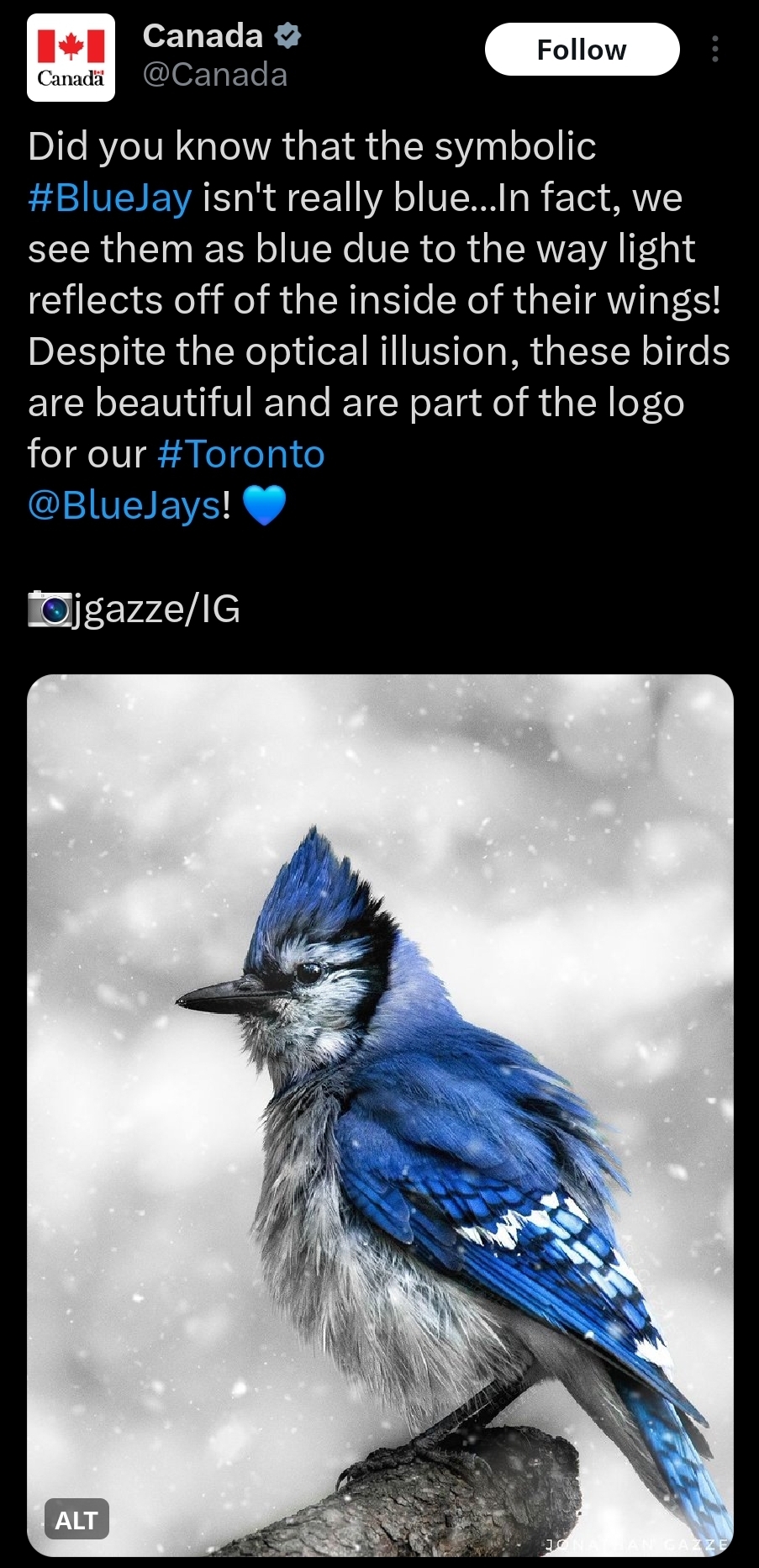Relevant XKCD quote I think of frequently:
Normal light interacts with the atmosphere through Rayleigh scattering. You may have heard of Rayleigh scattering as the answer to "why is the sky blue." This is sort of true, but honestly, a better answer to this question might be "because air is blue." Sure, it appears blue for a bunch of physics reasons, but everything appears the color it is for a bunch of physics reasons.
When you ask, "Why is the statue of liberty green?" the answer is something like, "The outside of the statue is copper, so it used to be copper-colored. Over time, a layer of copper carbonate formed (through oxidation), and copper carbonate is green." You don't say "The statue is green because of frequency-specific absorption and scattering by surface molecules."
So yes, they are blue. They're just blue for a slightly less common reason than other blue things.






 <- this is me rn.
<- this is me rn.